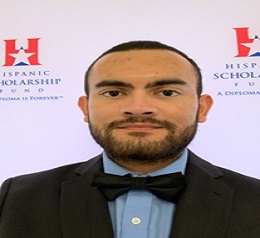Scholars International Webinar on:
Catalysis and Chemical Science
THEME: "The Role of New Technologies in the Fields of Catalysis and Chemical Science"
 24-25 Mar 2021
24-25 Mar 2021  Webinar | Virtual Meet | 11:00-17:00 GMT
Webinar | Virtual Meet | 11:00-17:00 GMT THEME: "The Role of New Technologies in the Fields of Catalysis and Chemical Science"
 24-25 Mar 2021
24-25 Mar 2021  Webinar | Virtual Meet | 11:00-17:00 GMT
Webinar | Virtual Meet | 11:00-17:00 GMT 
Stanford University, USA
Title: Tuning the Electronic Structure of Ag-Pd Alloys to Enhance Performance for Alkaline Oxygen Reduction
PhD Candidate J. A. Zamora Zeledón advances the discovery and fundamental understanding of materialproperty- relationships of electrocatalysts with applications for renewable electrochemical-energytechnologies. The objective of his studies is to employ combined systematic experimental and physics-based modeling methods to fundamentally understand the nature and properties of electrocatalyst active sites to tune performance for heterogeneous electrochemical reactions such as oxygen reduction. He uses the Stanford Nano Shared Facilities and the Stanford Synchrotron Radiation Lightsource for in-depth material characterization. To evaluate the activity of well-controlled thin-film catalysts he employs various electrochemical techniques to analyze the relationships between current, overpotential, time, and materialstability.
He collaborates with the Nørskov Group at the Technical University of Denmark to perform supporting representative DFT modeling. He is a Gates Graduate Fellow. He worked with Prof. Alex Bell at UC Berkeley during his undergraduate studies and was selected as a Chevron scholar for his contributions to energy research.
The large overpotential needed for the oxygen reduction reaction (ORR) is a factor limiting the large-scale deployment of clean energy technologies such as fuel cells (FCs) and metal-air batteries. Designing strategies to enhance catalyst performance for the ORR is one method towards enhancing these technologies. Focusing on H2 FCs, anion exchange membrane FCs are an attractive alternative to proton exchangemembrane FCs because some theoretically active, yet acid-unstable, catalysts, such as Ag, can be stabilized in alkaline media. Ag-rich catalysts are specifically ideal because of their low cost and abundance compared to other catalysts materials (e.g. Pt). Better understanding the nature of intrinsic enhancements for the ORR on alloys will help in the development of new ORR alloy electrocatalysts.
One strategy to enhance ORR activity is to alloy Ag, which binds oxygen-adsorbates too weakly, to a metal such as Pd, which binds them too strongly and is also very active. In this work, we use a thin-film model system to show intrinsic activity enhancements for the ORR on Ag-Pd catalysts, resulting in activities higher than those of both parent materials even after decreasing the Pd content by half. Physical characterization indicates that the films alloyed, are flat/smooth, and have modified electronic structures. ORR evaluation via cyclic voltammetry in 0.1 M KOH indicates the films with +40 at% Pd have activities, at 0.9 V vs. RHE, greater than the linear combination of pure Ag and Pd activities. Ag0.1Pd0.9 is the most enhanced thin-film alloy demonstrating a 5-fold activity enhancement relative to pure Pd. By correlating density functional theory with experimental measurements, we propose that Ag is modifying Pd’s surface electronic structure by weakening oxygen-adsorbate binding mainly via ligand effects. These enhanced Ag-Pd ORR catalysts could facilitate the large-scale implementation of efficient clean energy electrochemical systems.